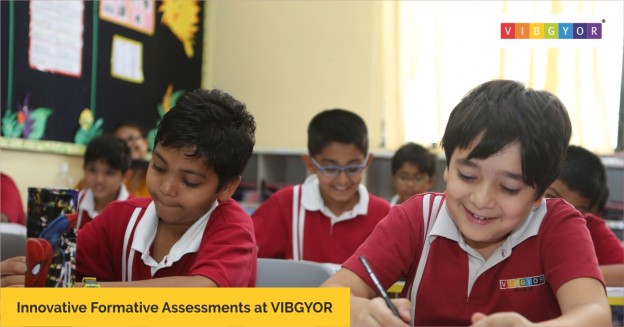![]()
Kiranjit Pannu, CEO, VIBGYOR Group of Schools
Holistic education embodies a comprehensive understanding of life, rooted in acknowledging human existence in its entirety. It delves into the existential reality and the interconnectedness of individuals with their surroundings, spanning from the personal to the societal and natural realms.
In essence, holistic education is a multifaceted approach that is not only about academic learning but also the cultivation of essential life skills and values. For instance, a student who excels in academics but lacks empathy and cooperation skills may struggle in a team-based work environment. This approach emphasises the importance of values such as empathy, cooperation, and environmental stewardship, which are integral to creating a more harmonious and sustainable world.
Within the framework of holistic education, curricular and co-curricular activities play a pivotal role in shaping the child’s overall learning experience. While the curriculum provides the foundation for academic learning, co-curricular activities, with their practical applications, complement it by offering opportunities for students to apply theoretical knowledge and develop essential life skills.
The Role of Curricular and Co-curricular Activities.
As the saying goes, “All work and no play makes Jack a dull boy.” Co-curricular activities have been an inherent part of education since ancient times, including activities such as music, debate, drama, and athletics. However, their significance was somewhat overshadowed by the emphasis on academics at various points in history. It became evident that a purely academic approach led to a lopsided personality, hindering the achievement of holistic development.
All-round or holistic development, which refers to the balanced growth of a child in all aspects of life including mental, physical, psychological, spiritual, and vocational, cannot be achieved through academics alone. Today’s schools recognise the importance of addressing students’ health, hygiene, sanitation, and safety, alongside promoting recreational games and activities for physical development, character education, and good citizenship.
Co-curricular activities encompass a wide range of pursuits aimed at enriching students’ educational experiences and fostering holistic development. Here are the seven types of co-curricular activities and the roles they play in a child’s development.
1. Literary Activities: These activities focus on nurturing language and communication skills, critical thinking, and creativity. They include debates, discussions, subject-wise clubs, school magazines, dramatisations, study circles, and story-writing sessions.
2. Physical Development Activities: Aimed at promoting physical fitness, teamwork, discipline, and leadership, these activities include various sports such as games, indoor and outdoor athletics, mass drills, parades, scouting, and participation in organisations like the National Cadet Corps (NCC) and Army Cadet Corps (ACC).
3. Aesthetic and Cultural Development Activities: Activities likemusic, dancing, drawing, painting, sculpture, exhibitions, fancy dress events, and folk dance performances aim to cultivate an appreciation for arts, culture, and creativity.
4. Civic Development Activities: Focused on instilling a sense of civic responsibility, leadership, and community engagement, these activities include participating in assemblies, serving on students’ councils, managing canteens, and organising and participating in celebrations of religious, national, and social festivals.
5. Social Welfare Activities: These activities aim to promote social awareness, empathy, and community service. They include organising and participating in fairs, festivals, community service projects, and cultural programs, as well as involvement in scouting or guiding activities.
6. Leisure Time Activities: Designed to encourage personal interests and hobbies, these activities provide students with opportunities for relaxation and self-expression. They include stamp and coin collecting, photography, reading clubs, as well as pursuits like needlework and knitting.
7. Excursion Activities: These activities involve educational trips and visits to places of interest outside the classroom. They include picnics, museum visits, zoo trips, and other excursions that offer students opportunities for hands-on learning and exposure to new environments and cultures.
To summarise, children cannot solely grow through education; they need to become well-rounded individuals in society, and for that, schools and parents need to understand the role of co-curricular activities. Infact, a study in India revealed that these activities positively impact academic performance, aid in achieving educational goals, influence behaviour positively, increase knowledge, and nurture a competitive spirit.
These activities are not just about the present, they are investments in a child’s future, meant to develop their character and skill, increase their social and emotional intelligence, help them perform better in academics, and instil confidence and self-esteem from scratch, so they grow up to become a holistic individual.

